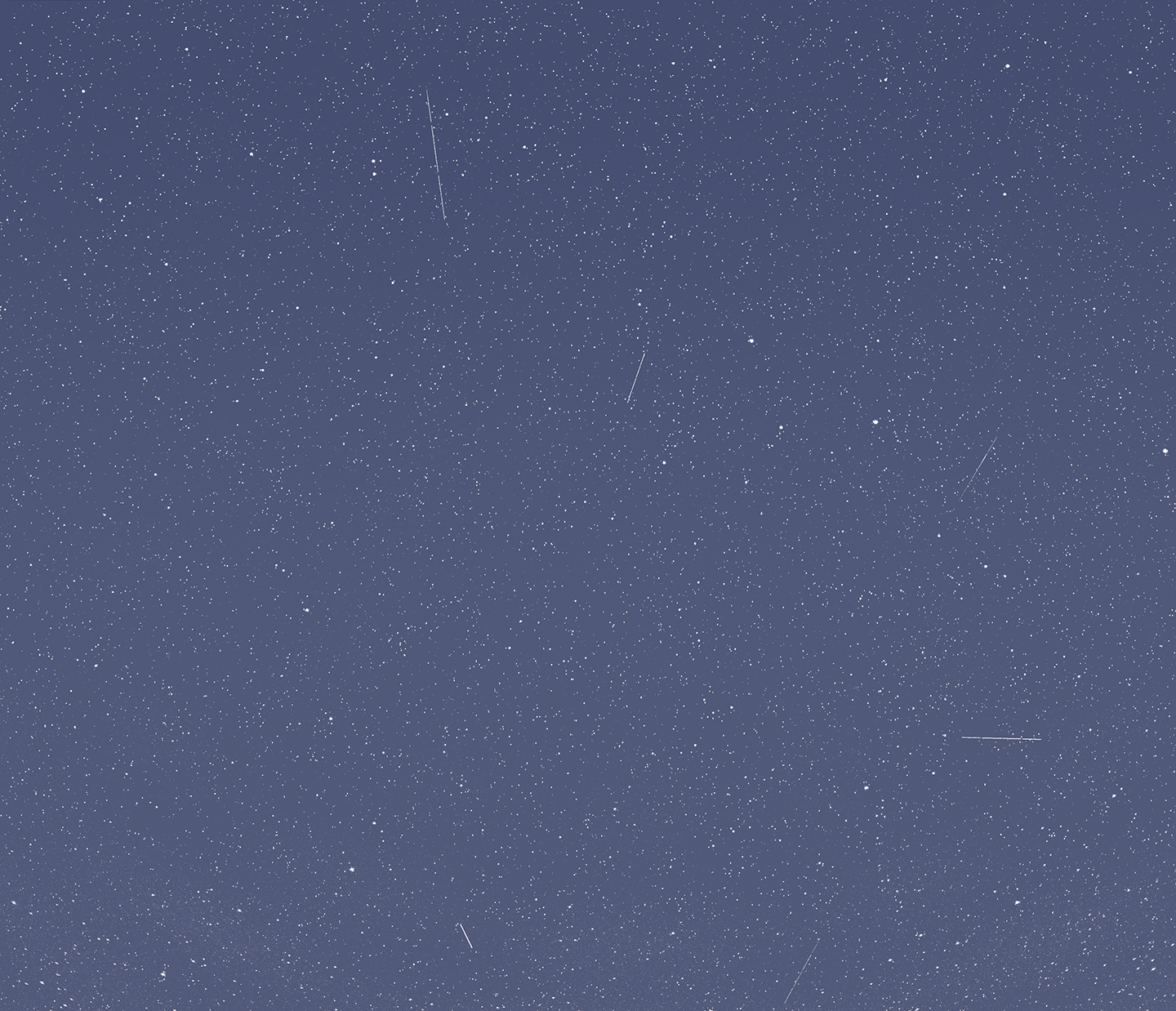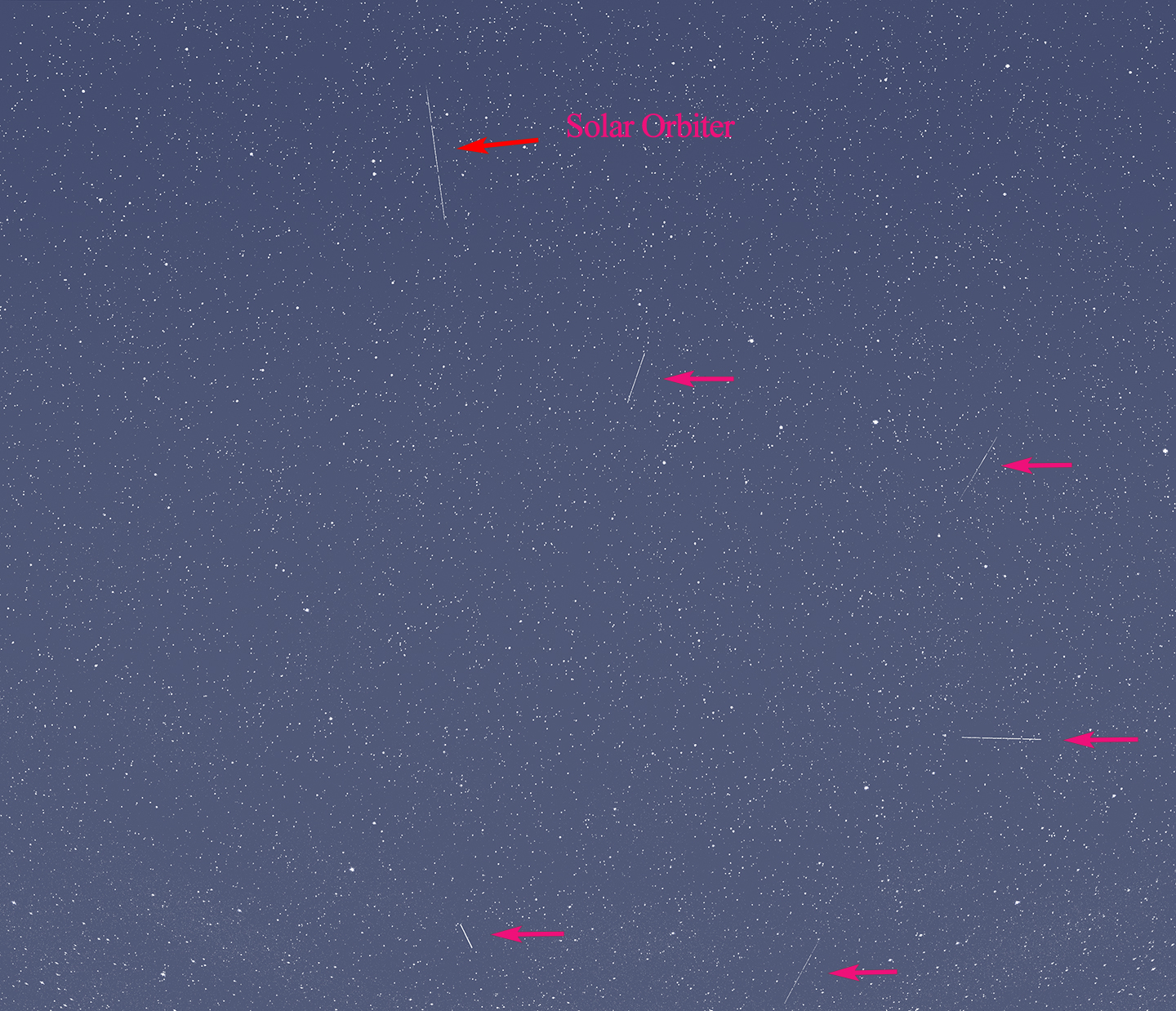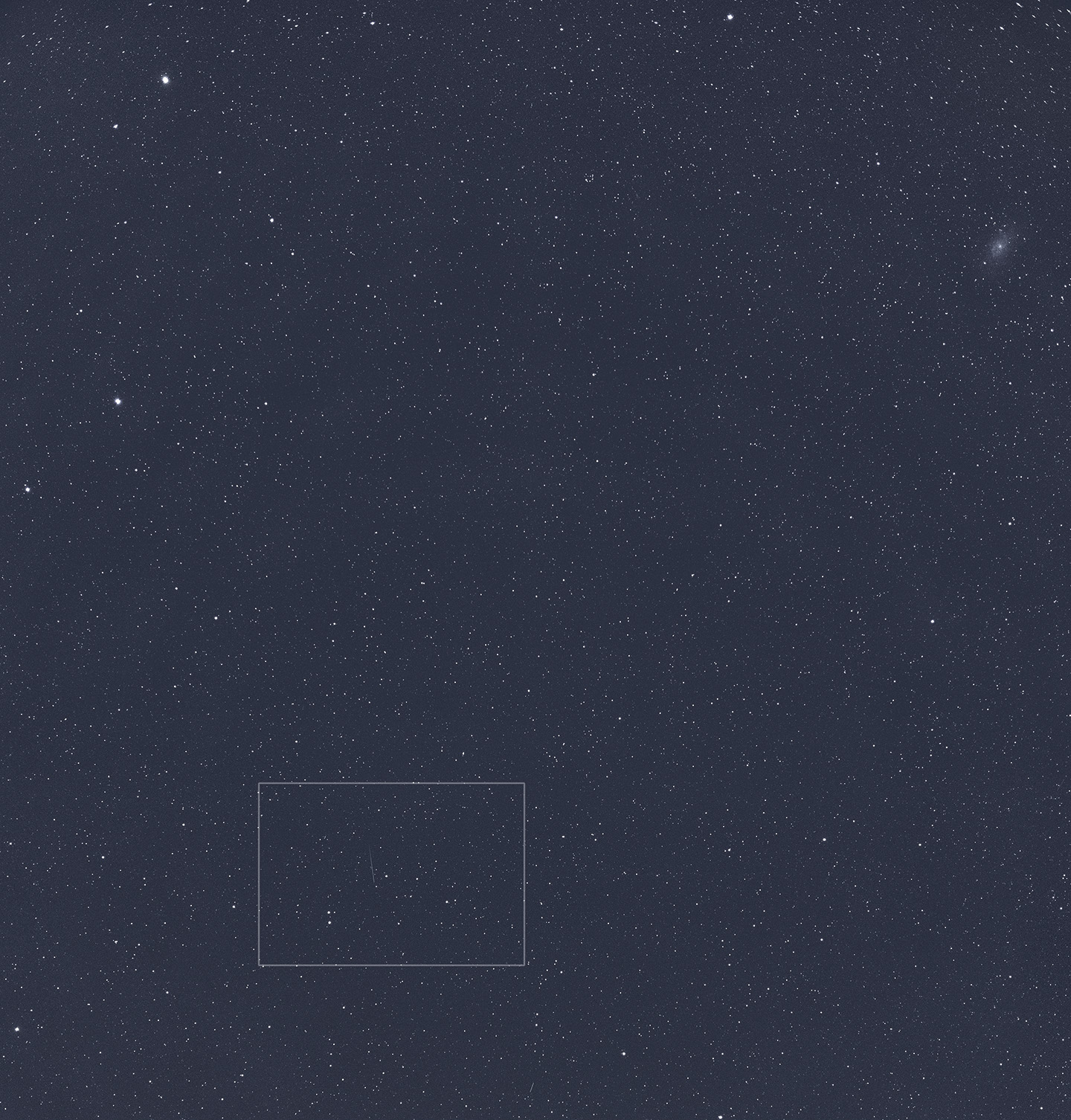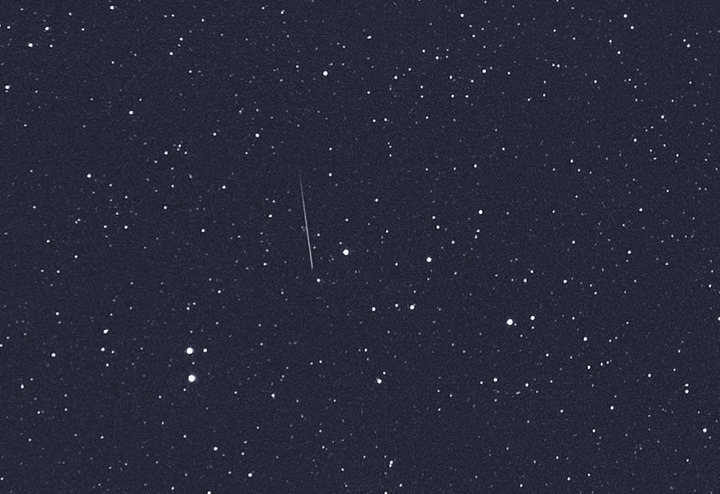| |
ESA / NASA Solar Orbiter Flyby
11/26/2021. I don't know for sure that I saw ESA and NASA's Solar Orbiter come up from the darkness. One moment it was not there, and the next it was. I had the impression that it took a fraction of a second to rise from invisibility, but the image says it took longer. It was close to the edge of my eyepiece's field, and it just might have slipped into view already in daylight after eight minutes and several seconds in the shadow of the Earth. I was watching through a 92mm apochromatic refractor and a well-corrected widefield eyepiece, staring at a nothing-special starscape in Pisces. I relied on the predictions of Heavens-Above.com to know where and when to look. The spacecraft appeared within seconds of its predicted return to daylight and in exactly the forecast place (the temporal uncertainty is down to me: I didn't look away from the eyepiece to check the time). From my vantage in western North Carolina, I followed it as it faded with distance and slowed with perspective climbing back into deep space above Mexico and the Pacific Ocean. Over the course of several minutes, it faded into the sky on its way to the Sun.
All that time, I heard my camera clicking off 15 second exposures. I used the soft sound of the shutter to mark the Solar Orbiter's slowing passage among the stars. I'd attached it to a fast 105mm lens riding an equatorial mount. Here's a stack of four of the many, many frames I may eventually get around to refining:

Click the picture to see it bigger.
Really. It's worth it.
What a crowded sky! No wonder the spacecraft controllers were worried about flying through near-Earth space. At least five other satellites or pieces of debris are in that image (it's about half of the 105mm field of view). Here's a version with Solar Orbiter identified and less-exotic Earth-orbiting objects marked:

In those images, note that some other trails include four streaks; Solar Orbiter's has only three. It brightened to detectability near the beginning of the second exposure of this four-exposure stack, moving down the frame. Other slower-moving objects appear to leave continuous trails at this scale. For every object I recorded, there must be hundreds or thousands more below my limiting magnitude.
Here's a different section of the one frame which caught Solar Orbiter leaving the Earth's shadow. Messier 33 is at upper right; the stars of Aries are at upper left.

Make it big to see it better.
And finally, at least for tonight, here's the boxed area up close:

Solar Orbiter comes out of the Earth's Shadow
(Sure, you can make it bigger...)
Techspecs: Individual exposures were 15 seconds, tracked but unguided, through a Sigma 105mm F1.4 lens at F1.4. The camera is a Canon R6 set for ISO 6400 shooting RAW format. The mount is an Astro-Physics Mach1GTO. FWIW, under last night's skies, that exposure gets you just a little deeper than 13th magnitude. It might have done a little better, but I left the camera on ISO 6400 after focusing the lens; I meant to spin it down to 1600 for better dynamic range. Skyglow around here is pretty bad at that kind of exposure; I only had the right third of the histogram to work with.
If anyone wants to get serious about identifying the other objects in view, the camera's geographic location was 35.7768N, 81.5058W, 1122 feet ASL. The best timestamp for these images is the time of emergence of the Solar Orbiter into daylight. If that occured at 23:48:00, then the frames shown at top are from approximately 23:47:42 - 23:48:42 EST. Adjust if you know better the instant of its return to full sunlight. Good luck!
Note about the R6: the biggest reason I didn't catch the restricted histogram was that I couldn't review my images in real-time. Nothing I tried would restore the ability to press "image review" and have a look to see what I was getting. Other controls were locked out, too. A month an a day late, I found the solution: remove the remote control cable from the camera plug-in, and all will be well. Plugging in a remote release prevents image review as well as this, that, and the other thing. Go figure.
:: top ::
My deep-sky photos are made with a variety of sensors and optics. Deepest images come now from a ZWO ASI1600MM Cooled Pro CMOS camera, an ASIair (model 1) and sometimes one of several laptops. A good many images come from an unmodded Canon 6D but a lot more will be coming from an R6. Video and video extracts begin in a Canon EOS M, usually running in crop mode via Magic Lantern firmware (but the 6D and especially the R6 will probably see more use). Telescopes include an AT10RC, an Orion 10" F4 Newtonian, and a pair of apochromats: a TMB92SS and a AT65EDQ. A very early Astro-Physics 5" F6 gets some use, too. So do lots of camera lenses on both the ASI1600 and on the Canons. A solar Frankenscope made using a 90mm F10 Orion achromat and the etalon, relay optics, and focuser from a Lunt 60 feeding a small ZWO camera will see more action as the Sun comes back to life (Autostakkart!3 is my current fav for image stacking). Mounts include an iOpton SkyTracker (original model), a bargain LXD-55, a Losmandy G11 (492 Digital Drive), and an Astro-Physics Mach1. PixInsight does most of the heavy lifting; Photoshop polishes. Some of the toys are more or less permanently based in New Mexico. I desperately hope to get back soon.
|